Epic Party! Epic Museum!
Museum of the Communist Party of China
Location: Datun Lu, Chaoyang District, Beijing. Nearest subway stations are Olympic Green and Anlilu, each around 500m away.
Opening: 09:00 – 17:00 Tues – Sun (closed on Mondays)
Cost: Free! At the time of writing, this museum must be booked before you visit. Use the WeChat miniapp (bring passport or photo ID)

Beijing’s newest museum (at the time of writing, opened on June 18th 2021 – by Xi Jinping and all the other top leaders of China), is this huge building, in the Olympic part of the city and right next door to the similarly gigantic Science and Technology Museum. Opened to mark the 100th anniversary of the foundation of the Communist Party of China (CPC) and dedicated to all the triumphs and glories of this organisation, as well as some of its struggles too.
I first tried to visit this place a few weeks prior, but was turned back for not having a reservation, which couldn’t be made on the spot. Booking via their frustrating WeChat program was also a bit of a drag as it initially refused to accept a passport number rather than Chinese ID number, and an otherwise helpful member of staff on site simply told me that as everything inside was in Chinese I wouldn’t find it interesting and should reconsider a visit to this museum, which isn’t much of a welcome to be honest!
The CPC Museum seems destined to become one of the canonical sites for domestic tour groups coming to Beijing though, with the recent surge in promotion of the Party in domestic media and propaganda, plus the fact that this really is a pretty amazing museum too – one which, frankly, falls short of top tier global standards, but which is still really rather well done and a fascinating (if somewhat frustrating in parts) and lengthy experience.

I spent around two and a half hours in the CPC Museum, this was really about the shortest time possible as it is genuinely enormous and covers several floors. Despite the initial warning from that unhelpful staff member there are in fact some explanations in English – mainly just the introductions to sections, as well as the conclusions. But the text is so broad that it isn’t all that much help in understanding the narrative, translating some of the other information would be most welcome if the idea or plan is to make a place attractive to non-Chinese visitors (really though, this isn’t the intention at all – this is a domestic museum for domestic visitors).
The exhibits are laid out chronologically, but we start with some pre-CCP history outlining the ‘Century of Humiliation’ suffered by China at the hands of various foreign aggressors. So, the Opium Wars, the Boxer Uprising, various unequal treaties, and the gradual dismemberment of the nation. Then the Nationalist Revolution of Dr. Sun Yet-sen, which ended the Qing Dynasty, the Warlord era, and finally the beginning of salvation; the creatin of the Communist Party of China in 1921.
At this point the omnipresence of large quotes by President Xi Jinping starts to be noticed. Why would there be a Xi quote above a section about the works of Sun Yet-sen? Why not a quote from Sun himself? This continues throughout the museum and really gives off a DPRK vibe when the focus on the words of one person (not present during the well-recorded periods being referred to for the most part) seemed very out of place to me, and a bit of a harbinger of things to come. This first section could have been illustrated with the words of Dr. Sun, or of the main figures of the age such as Li Dazhao perhaps, but instead there are a vast number of quotes by the current President instead. This may not seem wrong to many visitors, but it didn’t strike me as the best use of space.
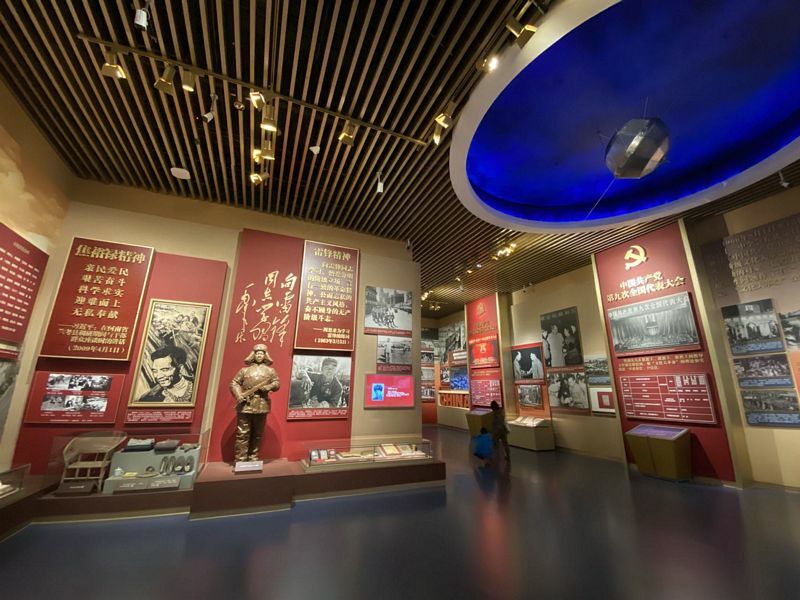
On Li Dazhao though, one of the most interesting exhibits in this first section is also one that is quite morbid: his gallows. This is recorded as Cultural Heritage Item 0001 in China, and now stands in this museum, a testament to the man who very well could have ended up leading the Party and perhaps the country but met an early end due to his agitation as the ‘First Communist’ in China.
Next, we pass through halls and exhibits to the key periods in the days between the creation of the CPC and liberation itself (which was declared on Oct 1st 1949). So the early united front between the CPC and the Kuomintang (KMT) to fight against warlordism in the Northern Campaign, the failure of that union, the civil war and the Long March, the years spent running bases in Jinggang Mountains and in Yan’an, the invasion of the Japanese, another United Front to battle the invaders, then the second round of civil conflict that ended with the KMT forced to withdraw to Taiwan and the declaration of the People’s Republic of China. All this takes up the entire first floor of the museum, and we’re only 28 years into the century-long story!
At this point, the CPC is in control of the country, and much work lies ahead. To me, this part of the museum was the most interesting – with displays about industrialisation, campaigns to bring modernisation to the countryside, and the Korean War as well. But I also started to notice how there was actually very little detailed information on display at all, which I hadn’t really noticed all that much earlier on.
The museum is, as mentioned, very large indeed, with all halls made up of a series of exhibits with very high ceilings, and well-chosen and displayed giant photos all over the place. Additionally, there are models, relics of the era, and statues too. But the text is basic and amounts to just sectional introductions, captions, and conclusions. This is pretty basic stuff and doesn’t offer much in the way of detail. A better museum with more dedication to its subject could have offered something like pull-out panels with deeper and more complex explanations, especially given the complexity of the narrative here, but instead a simple version is offered, with a large focus on a handful of big beasts of the period (if you are the kind of person to tire easily of photos of Mao Zedong, Zhou Enlai, and Zhu De, then skip this place!).
It is also in this part of the museum, charting the years from 1949 to 1976, that a few omissions become clear, none of them unexpected of course, but still notable by their absence. There are a couple of allusions to difficult times to be noted, but is it really enough to mention “twists and turns” when building socialism and have that stand in for the Great Leap Forward? And why is there a part which mentioned the arrest of the Gang of Four and the end of the Cultural Revolution without even mentioning that this decade-long catastrophe has even started in the first place? and was there no contribution from the Party at all in these major events other than to bring them to an end?
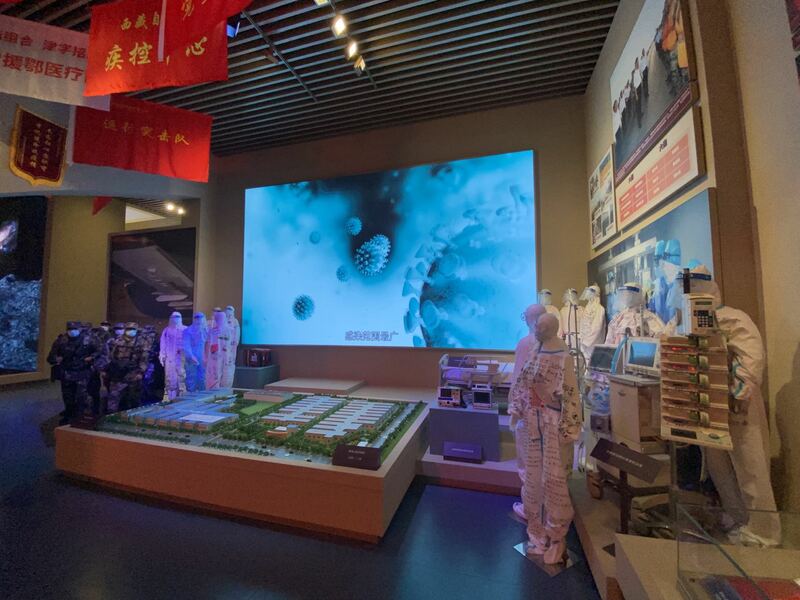
The CPC Museum does assume quite a lot of knowledge about recent Chinese history, which is fair enough I think (But also having some kind of guidebook or brochure available with some general info about the major events would be welcome for many visitors too), but for anyone with this knowledge they will find themselves looking in vain for sections about certain movements such as the Hundred Flowers Campaign, which were not quite as successful as those featured here instead. I found this to be a disappointment, even though it was very much to be expected.
We enter the final stretch, but it is a long one, with the exhibits starting to focus on the eras associated with the leaders of the Party itself, the Chairmen (not Presidents of the country, as this is a Party museum, not a national museum after all). Each of these vast sections is presented in the same way – so we get an intro about the great man in question, then a chronological look at their campaigns, triumphs, achievements, meetings with other important folks, etc. Then each ends with a retrospective of their career (i.e.; some photos of them when they were younger) and then their Red Flag Automobile used to oversee a military parade, staged in front of footage of one of those parades. This actually serves to highlight how things remain the same to me, so reliable constancy, or a disappointing bit of historical stasis? You decide!
These sections are huge though, it took me at least twenty minutes to do each of them; so, we get Mao Zedong, Deng Xiaoping, Zhang Zemin, Hu Jintao, and Xi Jinping. However, there was one other guy too – Hua Guofeng. He was CPC Chairman for nearly five years after all. Here he is, as usual, dropped from the list, and just shown in a handful of photos – mostly related to his work ending the Cultural Revolution (which seems to have never started), and arresting the Gang of Four (who were unrelated to the Party completely it seems).
Mao’s section is mainly about the big stuff; industrialisation, liberating the peasantry, and so on. Deng’s is about building the economy, relations with the outside world, and the beginning of the Chinese powerhouse (also it has a rather fu model of what a typical urban Chinese home would have been like in the late Deng era), there are a couple of notable omissions from the end of the Deng part too, maybe the museum ran out of space for them.
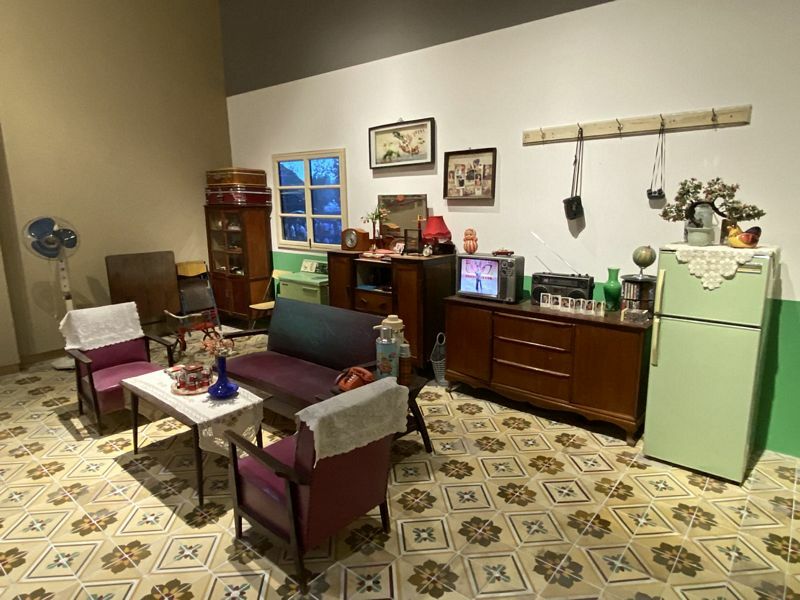
Jiang Zemin’s area starts to seem like a bit of a golden age, especially for folks like me who had their early days in China at that time: the Hong Kong and Macau handovers, the joining of various global bodies such as the WTO, the successful Olympic bid, Stock exchanges opening, cities becoming more architecturally ostentatious and modern, and the general rise of Chinese influence and prestige in the world. A period when international cooperation and the image of China overseas was all on the rise. This is maybe not quite the message that the museum wants to project, and interpretation will vary according to the visitor’s age, perspective, and experience, but I left this part with a sense that the next sections could have been a little differently.
Hu Jintao’s part sees us through the battle against SARS, the 2008 Olympics, and continuing economic growth. Hu was never the most charismatic politician, so it is hard for even a hagiographic exhibition such as this one to really show up his glowing personality, but instead, a focus on the countryside getting better-off, and China growing in influence seems appropriate.
Finally, the present era, under President Xi, arrives. This part is very large, and at times you wonder when it will all actually end (as seems appropriate perhaps) but is very impressive. Massive screens show speeches by Xi, different exhibits show triumphs all led by him; military development, the defeat of the deadly Covid-19 virus (although if that’s a thing of the past why was I mandated to wear a mask on my visit?), space and deep-water exploration, the expansion of high-speed rail, all kinds of mega projects, lots of references to ‘Xi Jinping Thought” without bothering to describe what this is (in the Jiang Zemin area I didn’t spot any referral to his once-heavily-promoted ideology of ‘The Three Represents’, so not all leadership theories have longevity).
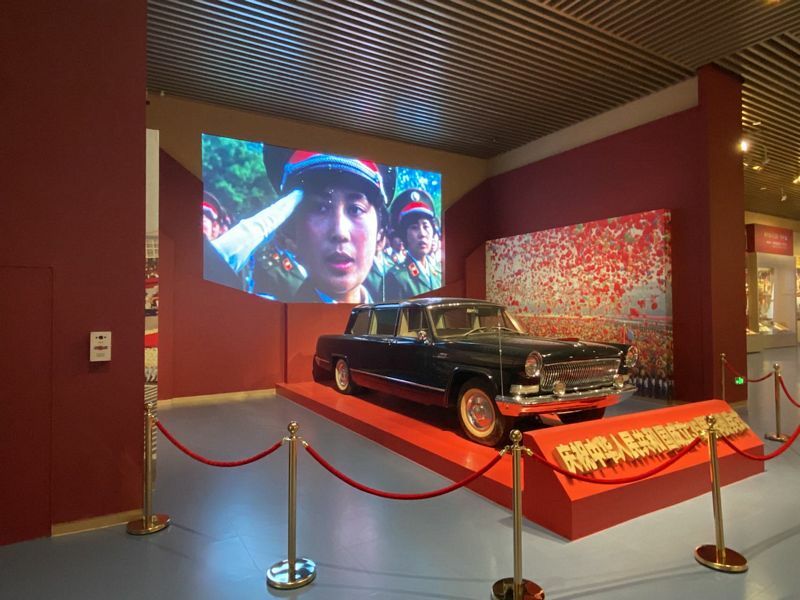
One is clearly meant to be blown away by all that has been achieved under President Xi, and his crowning achievement so far, and what is clearly supposed to be his lasting legacy (although that of course, is up to history) is the Belt and Road Initiative. Which is also on display here.
Mercifully, we reach the end, with a conclusive promise that Xi Jinping Thought will continue to guide the CPC into a bright future. Which is reassuring for many visitors, I’m sure.
On the fourth floor, there is an art exhibit consisting of massive paintings showing the 100-year history of the party. This is a temporary exhibit, which I enjoyed a lot actually. Also, zero other people seem to have made it this far through the museum on the day I visited. There is also a post office around 2/3 of the way through, and a quite fun gift shop hear the end, selling mugs, scarves, notebooks, and so on. What is missing though is an actual bookshop – why are there no texts available at such a place? this was a real letdown. There is a Xinhua bookstore in the small mall beneath the museum, but that’s not quite the same thing. Imagine visiting the Natural History Museum in London and finding no books about natural history available on site.
Also missing from this museum? A café. There are some places to sit in between the sections, but there are austere and cold. Just plain wooden benches lined up in front of a massive painting. They are like the waiting room in a dictator’s palace. I got around here in under three hours, but anyone with a deeper interest and perhaps more patience, would need longer, so a place to eat or drink something to recharge would be pretty welcome – maybe five cafes themed to the 5 (sorry Hua!) Chairmen of the CPC would be a good idea?
In the end, I emerged from the Museum of the Communist Party of China very impressed with the museum indeed. It is a major work, a place that is important to know about telling a history that is crucial to understanding the country it is in. but it is not really designed for those who may not be fully on board with official narratives, who may see the gaps here as clearly as that which is accurately recorded and exhibited. Anyone who has been to the Victorious Fatherland Liberation War Museum in Pyongyang, North Korea, will find the style of this place to be quite familiar – that is a compliment in that they are both exceedingly well-designed and impressive places, but also they are dogmatic, lacking in nuance, and designed for visitors who are pre-inclined to accept the complete factuality of what is being offered. So, caveat emptor when visiting this place – but do visit, it is absolutely fascinating.
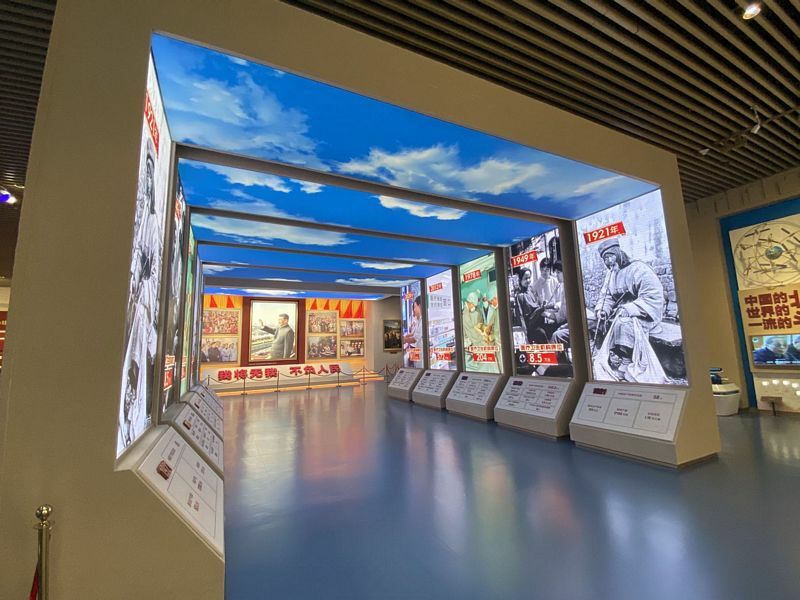
Koryo Tours
Museums of Beijing
